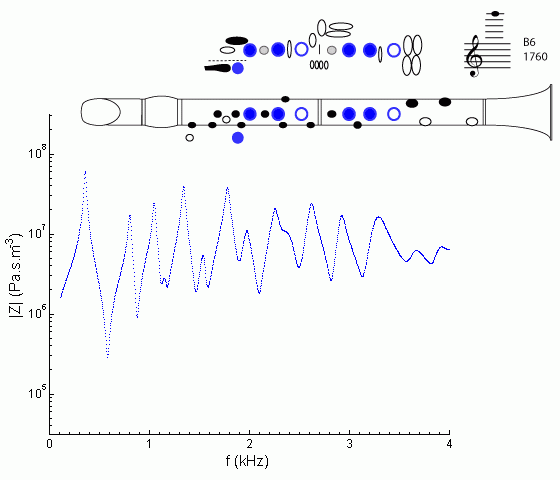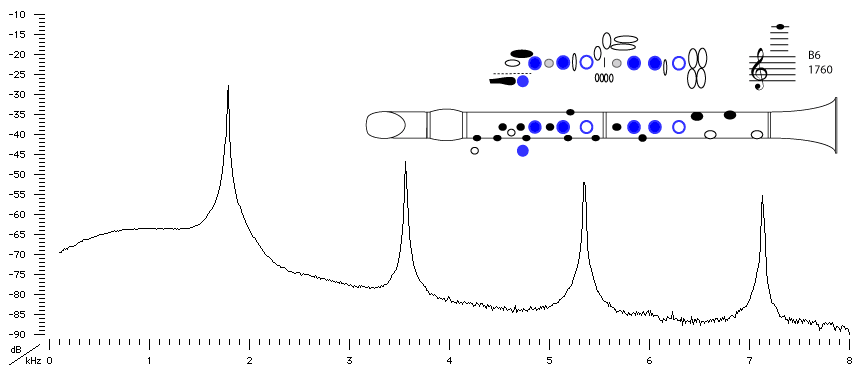| Acoustics of the clarinet |
Bb clarinet |
B6 |

|
Fingering Acoustic schematic Non-specialist introduction
to acoustic impedance Notes are the written pitch. |
We can think of this as the fingering for F3 with three register holes: the speaker key and the third finger holes on each hand. It plays somewhere near the eleventh harmonic (compare with the eleventh harmonic in the sound spectrum of F3). The register holes diminish and shift the five lower peaks (which, for F3, correspond to the 1st, 3rd, 5th, 7th and 9th harmonics) so that the desired peak (the sixth) is the strongest. However, we are now so far above the cut-off frequency that such discussions are rather simplistic and approximate. With this and all high notes, there is always the danger of the reed operating at one of the lower peaks. A hard reed has a higher natural frequency and one can help it with the embouchure.

Sound spectrum
of a Bb clarinet
played using fingering for B6.
For more explanation, see
Introduction to clarinet acoustics
|
Contact:
Joe Wolfe
/ J.Wolfe@unsw.edu.au |